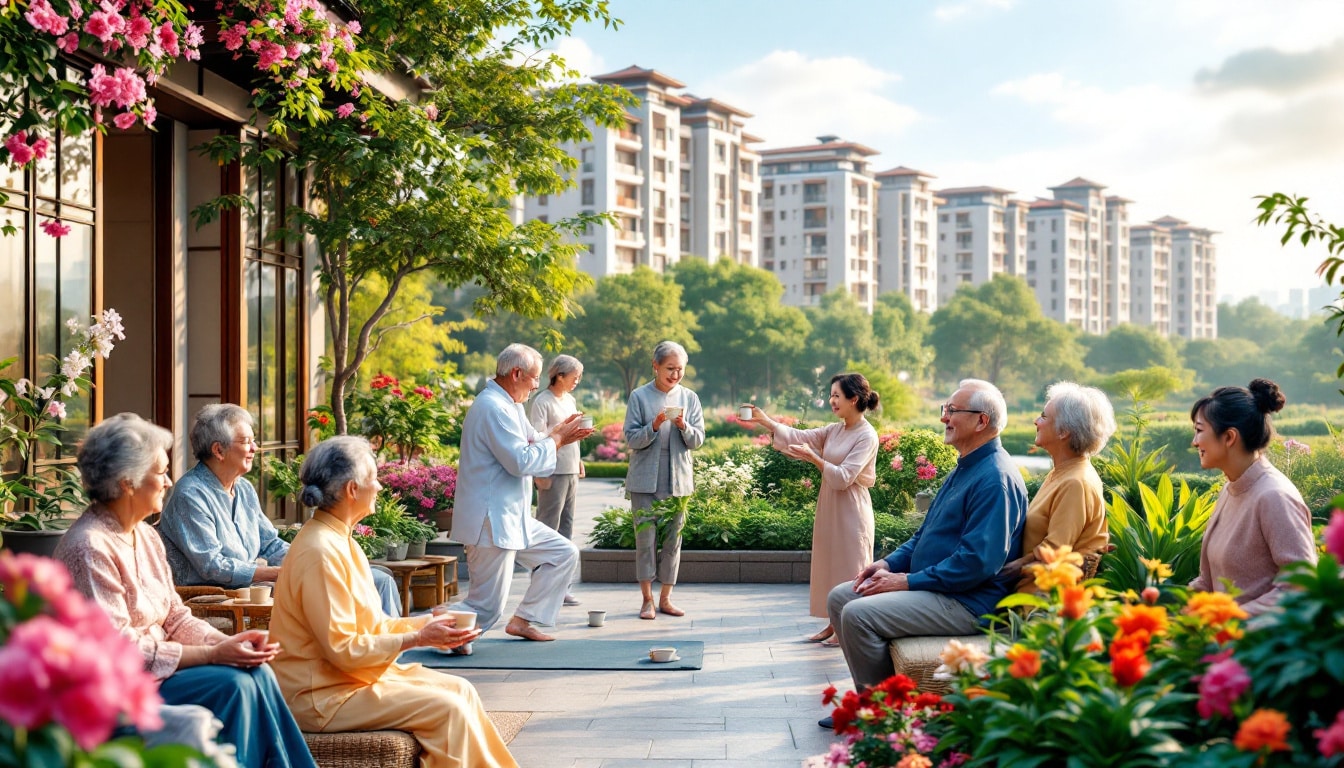“`html
Welcome to our innovative platform.
Your experience is at the heart of our priorities.
We are committed to protecting your privacy.
To provide quality services, we use cookies and data. These tools allow us to maintain and provide our services efficiently. In case of issues, we can monitor interruptions and protect against spam, fraud, and abuse.
Furthermore, we assess our audience’s engagement and site statistics to understand the use of our services and improve their quality. If you choose “Accept all,” we will also use cookies and data to develop new services, measure the effectiveness of advertisements, and display personalized content and ads based on your settings. By choosing “Reject all,” we will not use cookies for these additional purposes. Unpersonalized content is influenced by factors such as the pages you visit, your activity during your search session, and your general location. Personalized content and ads may include more relevant results, recommendations, and tailored ads based on your past activities, such as your previous searches in this browser. We may also use cookies and data to tailor the experience to be appropriate for your age if necessary.
You can select “More options” to access additional information, including details on managing your privacy settings. You can also manage your privacy settings at any time.

Table des matières
ToggleWhat is the silver economy in China?
The silver economy refers to all economic activities related to elderly people, encompassing health services, pensions, specialized housing, and leisure sectors aimed at this population group. In China, this economy is experiencing explosive growth in response to the rapid aging of the population. With a constantly increasing life expectancy and declining birth rates, the country faces new challenges and opportunities. This demographic transition encourages businesses and the government to innovate to meet the specific needs of seniors, making the silver economy a key driver of future Chinese economic growth.
Demographics and its impact on the silver economy
China is facing a significant demographic transition, with a growing proportion of citizens aged over 60. According to the latest statistics, the elderly population is expected to account for nearly 30% of the total population by 2050. This increase directly impacts several sectors, including pensions and senior housing. The demand for tailored services, such as elderly care facilities and home care programs, is booming. Additionally, this demographic shift stimulates innovation in health technologies and smart housing solutions, aimed at improving the quality of life for elderly people while optimizing costs for institutions and families.
Pensions facing the challenges of aging
With the rise in the elderly population, the pension system in China must adapt to ensure the financial security of retirees. The main challenge lies in the sustainability of pension schemes amid the growing imbalance between contributors and beneficiaries. To address this situation, the Chinese government has undertaken reforms aimed at diversifying the funding sources for pensions. Among the initiatives are encouraging private investments in supplementary pension schemes and establishing support mechanisms for informal workers. Moreover, emphasis is placed on increasing the retirement age and promoting employment for seniors, in order to extend the contribution period and reduce financial pressure on the system.
Innovations and solutions in the pension sector
In response to the challenges posed by an aging population, many innovations have emerged in the pension sector. Financial technologies, or fintech, play a key role in facilitating the management of retirement funds and providing more flexible investment options for seniors. Additionally, digital platforms are being developed to help retirees better manage their finances and proactively plan for their future. Furthermore, pension solutions based on collaborative models are being explored, encouraging the pooling of resources among local communities to offer mutual support and improve the financial security of retirees.
The evolution of the housing market for seniors
The market for housing for seniors in China is undergoing rapid transformation, with a growing demand for homes that meet the needs of elderly individuals. Service residences that offer medical care, dining, and recreation services are gaining popularity. These establishments meet the demand for secure and comfortable housing while allowing seniors to maintain their autonomy. Concurrently, increasing urbanization and population density in large cities drive the development of intergenerational housing, promoting cohabitation and mutual support between young and old.
Trends and opportunities in housing for the elderly
The housing sector for the elderly in China presents numerous opportunities thanks to innovation and adaptation of existing infrastructures. Among the notable trends is the integration of technology into homes, with advanced security devices, health monitoring systems, and smart home solutions that facilitate residents’ daily lives. Moreover, real estate developers are turning to modular housing designs, allowing for easy adaptation to the changing needs of occupants. These innovations not only meet the practical requirements of seniors but also contribute to creating more pleasant and inclusive living environments.
Future prospects for the silver economy in China
In the future, the silver economy in China is expected to continue to develop, driven by an aging population and increased demand for specialized services. Investment opportunities in the pension and housing sectors for seniors remain promising, with significant potential for innovation. Government initiatives aimed at strengthening retirement systems and supporting the development of suitable housing will contribute to this dynamic. Furthermore, the rise of health technologies and smart housing solutions promises to transform the landscape of the silver economy, offering more efficient and personalized services. To explore further opportunities in this area, you can check articles such as The silver economy: a promising potential to explore and The silver economy: a leap toward new opportunities.
Government and private initiatives to support the silver economy
The development of the silver economy in China also relies on both government and private initiatives. The Chinese government has implemented policies aimed at encouraging businesses to invest in services for elderly people, providing tax incentives and subsidies for the development of new infrastructures. At the same time, the private sector plays a crucial role in innovating and addressing the specific needs of seniors. Technology companies are developing connected health solutions, while real estate developers are designing modern, tailored residences for seniors. These combined efforts create a favorable ecosystem for the growth of the silver economy, while ensuring a better quality of life for the elderly.
The impact of the silver economy on employment and society
The silver economy also has a significant impact on the job market and society in China. The growing demand for professionals in health, social services, and management of residences for seniors creates new job opportunities. Moreover, this economy promotes a collective awareness of the importance of an inclusive and respectful society for the elderly. Companies adopt corporate social responsibility (CSR) practices by integrating support programs for older employees and developing adapted work environments. This evolution contributes to strengthening intergenerational ties and promoting a culture of respect and dignity for elderly people.
The challenges to overcome for the silver economy in China
Despite its many opportunities, the silver economy in China must overcome several challenges to realize its full potential. Key obstacles include the need to modernize existing infrastructures, train a specialized workforce, and ensure equitable access to services for all segments of the elderly population. Additionally, managing financial resources for pensions remains a major concern, requiring ongoing reforms and rigorous planning. Companies must also navigate a constantly evolving regulatory environment while meeting high consumer expectations regarding quality and service customization. Overcoming these challenges will require close collaboration between the public and private sectors, as well as an innovative and proactive approach.
The role of technology in the rise of the silver economy
Technologies play a crucial role in the development of the silver economy in China. Advances in artificial intelligence, the Internet of Things (IoT), and telemedicine offer innovative solutions to improve health services and housing for seniors. For example, remote health monitoring devices enable continuous tracking of residents’ medical conditions, facilitating quick intervention when needed. Moreover, digital communication and socialization platforms help reduce social isolation among elderly individuals, providing easy ways for them to stay connected with their loved ones and participate in community activities. These technologies not only improve the quality of life for seniors but also optimize the efficiency of the services offered.
The importance of innovation in the silver economy
Innovation is a key factor for the success of the silver economy in China. Companies are driven to develop new products and services tailored to the specific needs of elderly people, ranging from smart housing to personalized health solutions. Innovation also manifests in how services are delivered, with a growing trend towards remote work in the care sector and the use of robotics to assist with daily care. Furthermore, partnerships between technology companies and health institutions enable the creation of integrated ecosystems where innovations can be rapidly implemented and disseminated on a large scale. This dynamic of innovation is essential to effectively address the challenges posed by an aging population and to ensure sustainable growth of the silver economy.
International opportunities for the Chinese silver economy
The silver economy in China is not limited to domestic borders. Many Chinese companies are seizing international opportunities by developing and exporting solutions that address the aging population in other countries. Investments in health technologies and housing for seniors are often transferred to foreign markets where demographic challenges are similar. This international expansion not only generates new sources of revenue but also positions China as a global leader in the silver economy sector. For example, partnerships with foreign companies facilitate the sharing of best practices and the adoption of advanced technologies, thereby enhancing the competitiveness of Chinese solutions in the global market. To learn more about global opportunities, check out The new silver economy: a promising opportunity for Namibia and The silver economy of Thailand: trends and opportunities.
The economic and social benefits of the silver economy
The silver economy brings significant benefits both economically and socially in China. Economically, it creates new industries and offers job opportunities, thus contributing to GDP growth and economic diversification. Investments in pensions and housing for seniors also stimulate the real estate sector and health technologies, fostering continuous innovation. Socially, this economy promotes the inclusion of elderly individuals, enhancing their quality of life and strengthening community ties. Moreover, recognizing the importance of seniors in society contributes to a better appreciation of their role and a reduction in social isolation. These advantages also include better management of health resources and adaptation of public infrastructures, making society as a whole more resilient and sustainable.
Cultural challenges and social perceptions
In China, cultural challenges and social perceptions play an essential role in the development of the silver economy. Traditionally, respect and care for the elderly are deeply rooted in Chinese culture. However, with rapid urbanization and evolving family structures, these values are sometimes put to the test. It is crucial to maintain a balance between cultural traditions and the modern needs of seniors. Companies and policymakers must raise public awareness of the benefits of the silver economy while respecting cultural values. For example, promoting senior residences as community living spaces rather than distinct institutions can help preserve the sense of belonging and intergenerational respect. Addressing these cultural challenges sensitively and inclusively is essential to ensure the long-term success of the silver economy in China.
Public-private partnerships in the silver economy
Public-private partnerships are fundamental to the development of the silver economy in China. By combining the resources and expertise of the public sector with the innovation and efficiency of the private sector, these alliances allow for the creation of comprehensive and sustainable solutions to meet the needs of the elderly. For example, the government can provide a favorable regulatory framework and funding to encourage private initiatives in the field of pensions and housing for seniors. In turn, private companies can bring advanced technologies, personalized services, and innovative approaches to improve the existing offer. These collaborations also help to share risks and benefits, making projects more viable and effective. Moreover, public-private partnerships promote better integration of services, ensuring comprehensive care for seniors and continuous improvement of quality standards.
The role of associations and NGOs in the silver economy
Associations and NGOs play a vital role in supporting and developing the silver economy in China. These organizations contribute by providing support services, raising public awareness of issues related to aging, and advocating for public policies favorable to seniors. They also organize training and volunteer programs, creating networks of solidarity and support for elderly individuals. Furthermore, associations and NGOs often collaborate with businesses and government to develop innovative initiatives, such as day centers for seniors, mental health programs, and tailored recreational activities. Their engagement strengthens society’s resilience in the face of aging challenges and ensures that the needs of seniors are holistically and integratively addressed.
Success stories in the Chinese silver economy
Several success stories illustrate the potential of the silver economy in China. Pioneering companies in the housing sector for seniors have developed innovative residences combining comfort, security, and advanced technologies. Moreover, some public initiatives have managed to create sustainable and efficient pension models, integrating diverse funding mechanisms and benefits tailored to the specific needs of retirees. Additionally, collaborative projects between the technology sector and health services have led to the establishment of telemedicine solutions and continuous health monitoring for seniors, thereby improving their quality of life. These successes demonstrate that with an integrated and collaborative approach, the silver economy can not only meet the needs of elderly individuals but also invigorate the overall economy and foster a more inclusive and resilient society.
The long-term economic impacts of the silver economy
The silver economy has profound and lasting economic impacts in China. In the long run, it contributes to the diversification of the economy by stimulating sectors such as health, real estate, technology, and social services. This diversification reduces dependence on certain traditional sectors and creates new opportunities for growth and innovation. Furthermore, investing in the silver economy generates jobs at various levels, from managing housing for seniors to specialized health services, through technological development. These jobs promote an increase in purchasing power and an improvement in living conditions, thereby boosting consumption and investment in other sectors of the economy. Finally, by enhancing the well-being of elderly individuals, the silver economy contributes to a more stable and harmonious society, reducing costs related to health and social services and increasing the overall productivity of the population.
Merci @Lopinion_fr et Bravo également à Alogia et @VACbyC2S (coucou @Kelso3d 😉) #bienviellir #ehpad #seniors #silvereco #merci https://t.co/yCMhnlLfFF
— AnSo (@AnSo_de_Geil) November 17, 2016








